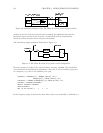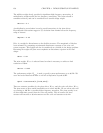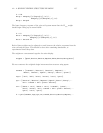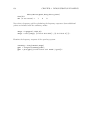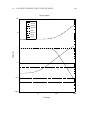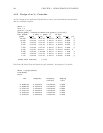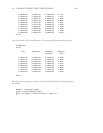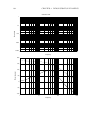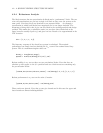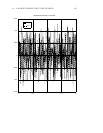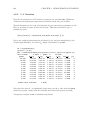
162 CHAPTER 4. DEMONSTRATION EXAMPLES
4.2.3 Design of an H
∞
Controller
An H
∞
design is now performed. Recall that we have one interferometer measurement
and two controller outputs.
nmeas = 1
ncon = 2
glimits = [0;20]
[Khinf,gamma] = hinfsyn(P,nmeas,ncon,glimits,{tol=0.25})
Test bounds: 0.0000 < gamma <= 20.0000
gamma Hx
eig X eig Hy eig Y eig nrho xy p/f
20.000 2.8e-02 3.1e-07 2.8e-01 -6.5e-17 0.0007 p
10.000 2.8e-02 3.1e-07 2.8e-01 -4.5e-17 0.0026 p
5.000 2.8e-02 3.1e-07 2.8e-01 -1.7e-16 0.0109 p
2.500 2.8e-02 3.1e-07 2.8e-01 0.0e+00 0.0487 p
1.250 2.8e-02 3.1e-07 2.8e-01 -1.6e-16 0.4059 p
0.625 2.5e-07 ******* 2.8e-01 -2.2e-16 ******* f
0.938 2.8e-02 -1.9e+06 2.8e-01 -1.6e-16 1.7198 f
1.094 2.8e-02 3.1e-07 2.8e-01 -1.9e-16 1.0727 f
1.172 2.8e-02 3.1e-07 2.8e-01 0.0e+00 0.5933 p
Gamma value achieved: 1.1719
Now form the closed loop and check the pole positions. As expected, it is stable.
Ghinf = starp(P,Khinf)
rifd(Ghinf)
Poles:
real imaginary frequency damping
(rad/sec) ratio
-2.8248e-02 3.4100e+01 3.4100e+01 0.0008
-2.8248e-02 -3.4100e+01 3.4100e+01 0.0008
-2.7911e-01 3.4212e+01 3.4213e+01 0.0082
-2.7911e-01 -3.4212e+01 3.4213e+01 0.0082
-2.9727e+01 -3.0010e+01 4.2241e+01 0.7038
-2.9727e+01 3.0010e+01 4.2241e+01 0.7038



